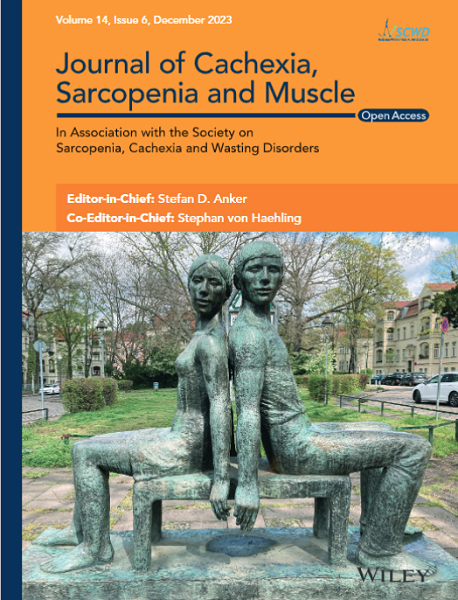Appendicular skeletal muscle mass index (ASMI), a crucial indicator of sarcopenia and estimated glucose disposal rate (eGDR), a surrogate marker of insulin resistance (IR), are associated with the risk of cardiovascular diseases. However, it remains unclear whether the collective effects, including the impact of the temporal progression of ASMI and eGDR, affect atrial fibrillation (AF) risk. This study aims to elucidate the association between the collective effects of ASMI and eGDR and AF risk in the non-diabetic older population.
A total of 8060 non-diabetic older individuals from a community-based cohort study were used to prospectively analyse the association between the collective effects of baseline ASMI and eGDR and AF risk. Among them, 7651 were eligible and used for dual-trajectory analysis of the association between dual trajectory of ASMI and eGDR and AF risk. The temporal development of ASMI and eGDR over time was determined using a dual-trajectory model. Statistical analyses involved restricted cubic splines and Fine–Gray competing risk models, adjusting for potential confounders.
In the prospective analysis, the hazard ratio (HR) of AF was 1.762 (95% confidence interval [CI]: 1.528–2.032) in the low ASMI group compared to the normal ASMI group in total participants. Restricted cubic splines analysis demonstrated L-shaped associations between AF risk and ASMI and eGDR, with inflection points at 7.23 kg/m2 and 7.85 mg/kg/min, respectively. Low ASMI and moderate and low eGDR exhibited a significant interplay for increasing AF risk (HR: 1.290 and 1.666, 95% CI: 1.136–1.464 and 1.492–1.861, respectively, padj. < 0.001). One-SD increment ASMI and eGDR synergistically reduced AF risk (HR: 0.896, 95% CI: 0.839–0.957, padj. < 0.001). In the dual-trajectory analysis for total participants, five distinct dual trajectories of ASMI and eGDR were identified. Group 4, characterized by moderate-stable ASMI and moderate-stable eGDR, exhibited the lowest incidence of AF (7.03 per 1000 person-years) and was used as a reference for further analyses. Group 1, characterized by high-decrease ASMI and high-decrease eGDR, had the highest AF risk (HR: 2.255, 95% CI: 1.769–2.876, padj. < 0.001), followed by Group 5, with high-decrease ASMI and low-stable eGDR (HR: 1.893, 95% CI: 1.491–2.403, padj. < 0.001) when compared to Group 4 after adjustment for potential confounders including baseline ASMI and eGDR.
The collective effects of ASMI and eGDR are significantly associated with AF risk in the non-diabetic older population. Collective management of skeletal muscle mass and IR might be a useful and effective management strategy for preventing and controlling AF.



